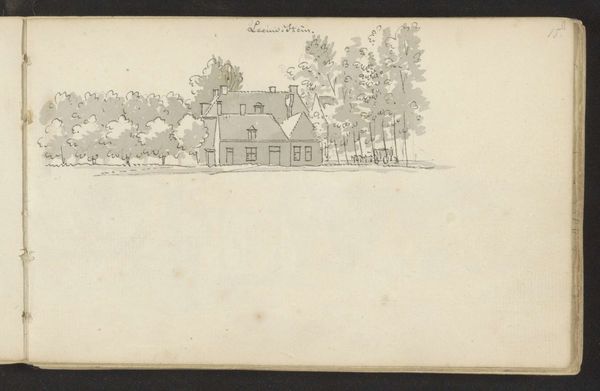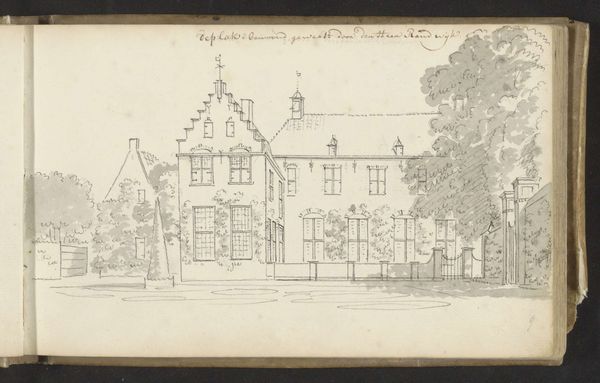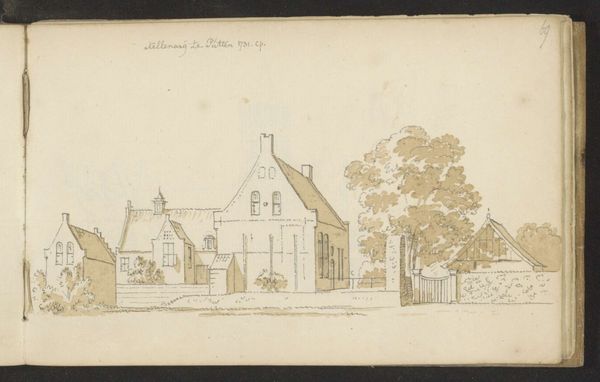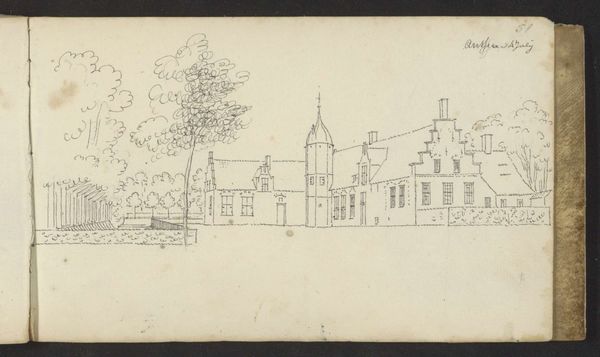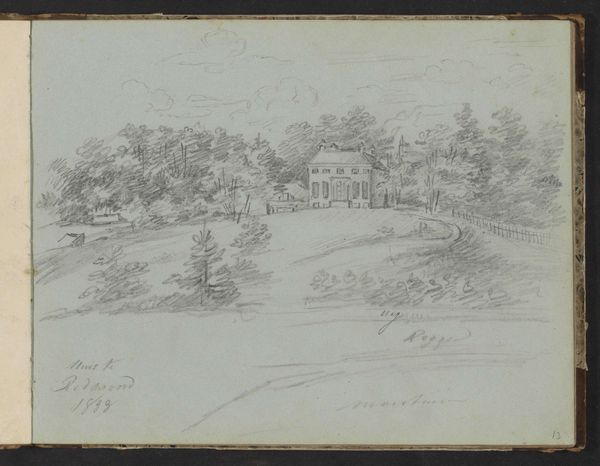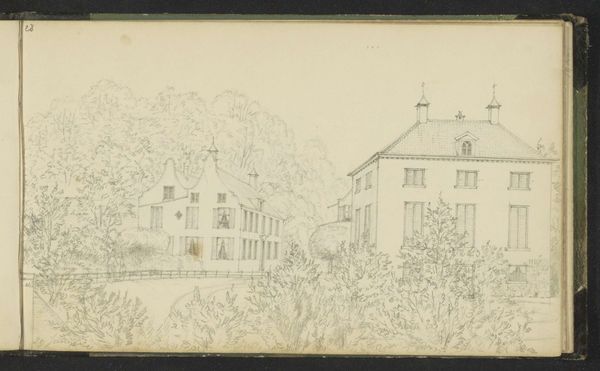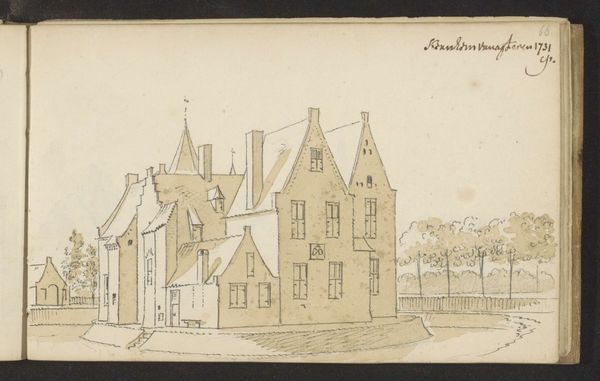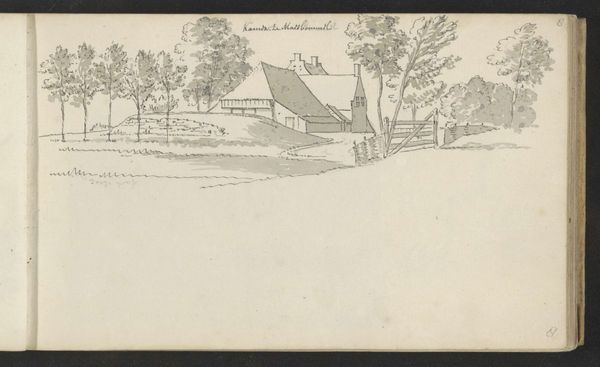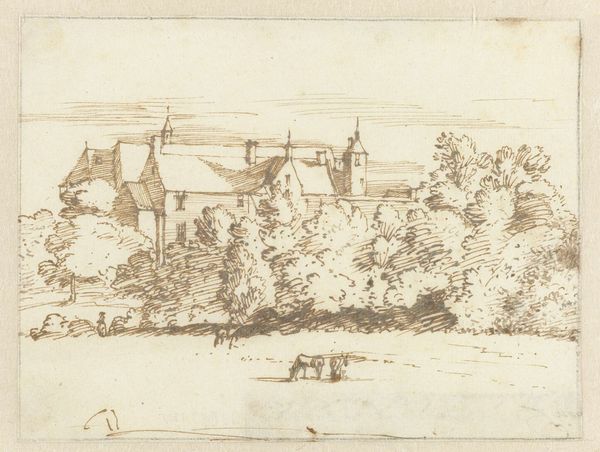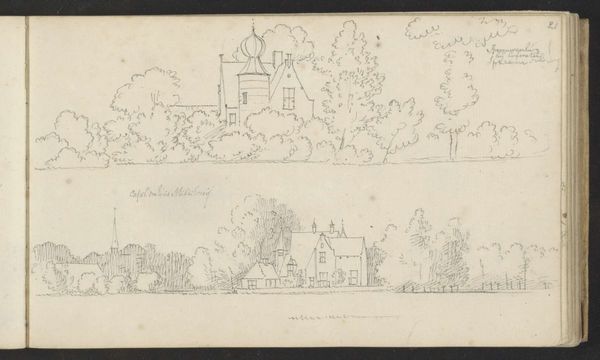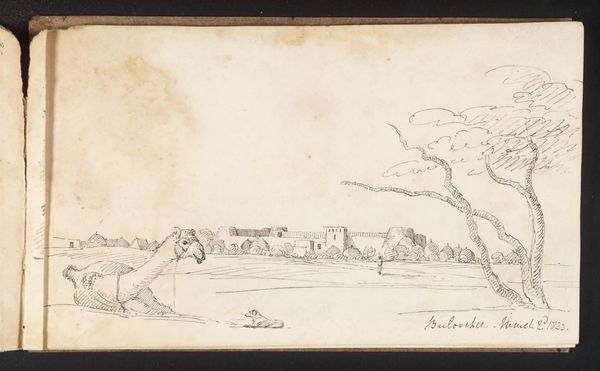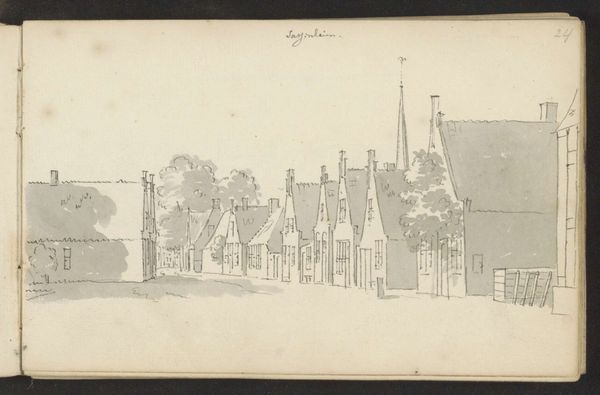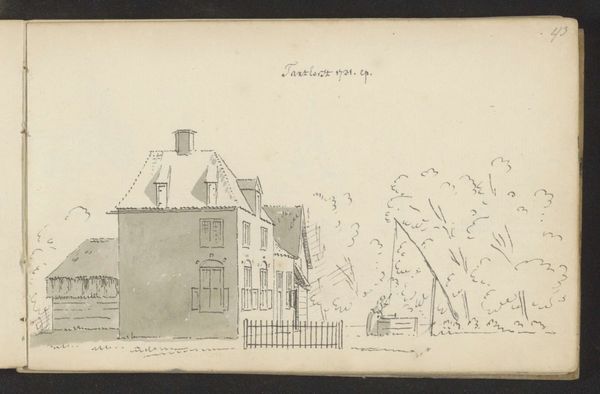
drawing, paper, ink, pencil
#
drawing
#
aged paper
#
dutch-golden-age
#
old engraving style
#
sketch book
#
hand drawn type
#
landscape
#
paper
#
personal sketchbook
#
ink
#
pen-ink sketch
#
pencil
#
ink colored
#
pen work
#
sketchbook drawing
#
genre-painting
#
sketchbook art
Copyright: Rijks Museum: Open Domain
Curator: This is a drawing entitled "Huis De Leemkuil te Bemmel," dating back to 1731, by Abraham de Haen the Younger. It's rendered in pencil and ink on paper, a beautiful example from the Dutch Golden Age. What's your initial reaction? Editor: It has a quiet, unassuming charm. The limited use of ink creates an atmosphere that feels both delicate and a bit melancholic, as though the artist were capturing a memory fading at the edges. It also brings the feeling of looking into a personal notebook and private thoughts. Curator: Precisely. These sketchbook drawings offer intimate glimpses into 18th-century Dutch society, showcasing its architectural styles and the burgeoning landscape tradition. We must consider the social dynamics at the time. Wealthier families started investing in country houses to get away from crowded cities, shaping both the geography and art market as luxury met art. Editor: Definitely. This rise in prominence for country estates also signified shifting social priorities. The art depicts an idealized existence, glossing over the exploitative labor that fueled this economic privilege and paid for houses just like that one. Where would those portrayed rank within a society predicated on social division? Curator: Absolutely. This type of artwork also touches on the rising sense of Dutch national identity during that era. Capturing the details of landscapes and architecture contributes to visual documentation, reinforcing a sense of shared culture and place that unites the growing Dutch empire. Editor: And it prompts us to confront the inherent biases of visual representation, too. Even seemingly neutral landscapes played a role in consolidating narratives that served particular social and political agendas by representing them in an artificial light. How much artistic license has been applied here, in your opinion? Curator: Good question. De Haen’s style combines keen observation with artistic flourishes. The way he renders the foliage and textures, particularly in the trees, adds depth beyond a strictly representational record. The architectural features appear to be carefully observed and translated into line art. It probably sits between faithful portrayal and artist's impression. Editor: The act of sketching itself takes on greater weight when viewed through that prism. It underscores the importance of accessible historical records, revealing a past full of unacknowledged contributions. A valuable piece for stimulating nuanced perspectives, certainly. Curator: Agreed. A fascinating snapshot of its era, encouraging us to question art’s role in shaping societal narratives then, and still now.
Comments
No comments
Be the first to comment and join the conversation on the ultimate creative platform.
